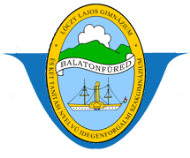Implicit learning of abstract structures: How can it be computationally modelled?
Zoltan DIENES (Sussex University)
Dienes and Jeeves (1965) discussed how children could handle mathematical structures without being able to explicitly say what the structure was. Reber introduced the closely related notion of implicit learning to psychologists in 1967 and started a field of research, which I joined in the 1980s (in undertaking my PhD with Donald Broadbent). I discuss research from this field showing that people can implicitly apply knowledge to different perceptual embodiments of the same structure, and they can implicitly learn structures more interesting than simple associations, such as symmetries. I discuss the simplest sort of computational models that can achieve these same tasks (namely, simple connectionist models). In order to learn symmetry, it seems the model needs exposure to mathematical variability, but it is not surprising that some of the same pedagogical principles should apply to models as to children! The models I deal with do not yet show how the knowledge becomes more explicit and general. What I do show is how much can be done at the purely implicit level, which should be able to provide a grounding for later explicit knowledge.






